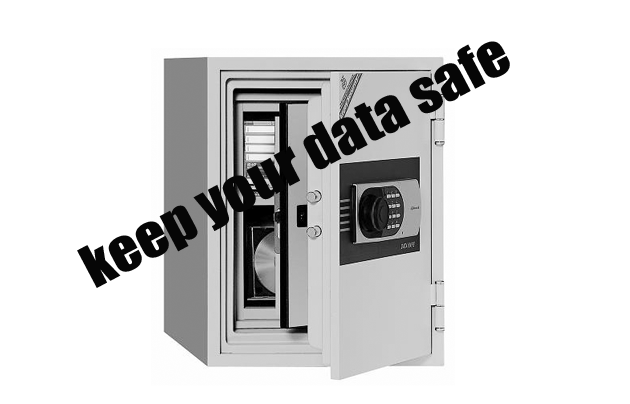
With the explosion of mobile devices with camera function, taking pictures and videos and uploading them in social networks or any sharing site are now a normal activity.
Improving speed and bandwidth of networks, such as the arrival of 4G or LTE technology, allows people to upload and download and share pictures and videos online in a snap.
Such activity and behavior of people lead to a growing concern about protecting personal data. Not all pictures and videos are intended for sharing to multitude of Facebook friends to be commented upon or even sneered at.
But now that data can be easily copied a hundred times or even a million times over in the era of the Internet of Things, the assurance of keeping safe the stuff you painstakingly hid in your PC’s hard drive, or smartphone’s SD card, or a portable storage is no longer present. Ctrl C and V and the quick press of the Share button have changed all that.
However, there are things that you can do to keep your data safe and not become victims similar to what happened to beleaguered celebrity couple Chito Miranda and Neri Naig.
1. Personal data is “personal.” Remember it is important and shouldn’t be accessed without your permission. Think of it as your wallet that you would not want to be lying around to tempt people to pick it up and pry inside. For example, PC desktop at home shared among many family members in the house isn’t the ideal place to store your personal data.
2. Always do a backup of the data inside your PCs hard drive, either to an external storage or a cloud service. External storage is preferable as transferring of files is faster and the space bigger—external storage now comes in 1TB and more. Unless you have bought a big space in Amazon cloud service or Dropbox that can hold your data backup, cloud storage can be considered. Besides, cloud back up requires a fast Internet service, which many of us in the Philippines still do not enjoy.
I would, however, recommend cloud back up of files from 3G/4G smartphones and mobile devices.
3. Once the files are all backed up, make sure to delete them from the PC’s hard drive. This will help in providing space for new data in your PC.
4. Back up your files using the syncing tools or app that comes with the storage product. Transferring files via drag and drop isn’t advisable. This method may look easy but it really takes time and makes the files very unsecured as anyone who has taken hold of your hard drive can easily peruse the contents and folders.
5. Your external storage back up application also feature encryption to protect the backed up data. It is always wise to use the data encryption to set passwords, so even if you lose your storage, others couldn’t access the files. And in setting passwords, make it a point to avoid birthdays or other personal data, which are easy to guess or look up in your FB page.
6. Choose external storage product with good encryption or password protection application. Also choose an external storage that allows for easy look up of files and easy retrieval. In relation to this, some antivirus software such as the Norton 360 have a built in backup application. But based on experience, I’d advice to stick to the external storage back up application to back up your files. When I used the Norton back up, it required the other PC from where I’d plan to install again the backed up files to have a full Norton 360 antivirus installed. Since that PC doesn’t have a Norton in it, I wasn’t able to reinstall the backed up files taken from my other PC that conked out.
7. If you’re using Dropbox from your mobile device, use the encryption feature. Remember to also delete files from your phone once they’re backed up in Dropbox or any other cloud storage service. Smartphones easily gets lost and there’s high probability that the taxi driver who picked up your phone might be looking inside the photos and videos and uploading them online.
8. The thing that concerns me with cloud storage is the tenure of the cloud service. Many cloud storage vendors offer storage space on a monthly rental basis, while others on a yearly contract. But once your contract ended with them, so too is your access to your precious files. Unless you want to continue the cloud service after the contract ended, it is advisable to have your files backed up in a physical storage that you personally own.
9. A lot of the files we make are disorganized and feature number file names that we don’t bother to rename. For easy retrieval of these files, it is advisable to make the effort to rename the files based on what they’re about and put them inside properly labelled folders. For example, “Baguio Trip Folder 2013” folder and the files inside also renamed to Baguio Trip family photo1 and include the name of the person in the photo, so on and so forth. For batch renaming of files, I use the free app Fastone.
10. The most prevalent form of data theft springs from the act of bringing a PC or laptop to a service center, which has all the tools to look inside the hard drive and copy the entire contents, including that naughty video you’ve done ages ago. So before you bring your PC to the service center, make sure you have perform file deletion. If it’s impossible to access the hard drive since the PC won’t boot or pretty much dead, you can still access the hard drive by unscrewing it physically from inside the case. There are hard drive storage cases that you can buy (CDR King has lots of them) and use them to make the hard drive you took out from the dead PC into an external storage that another PC could read. Simply install the hard drive inside the case and connect it to another PC you’ve got and you can access the files that you may wish to back up or delete.








